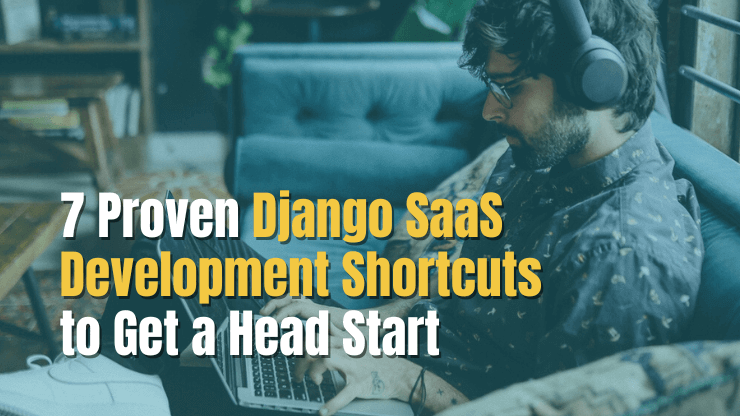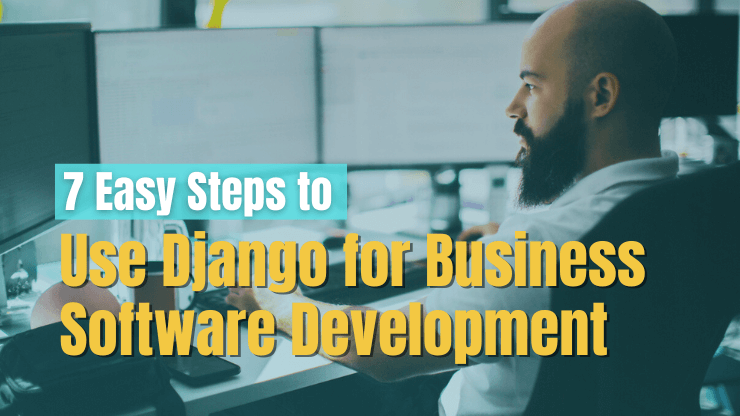With thousands of new SaaS products launching every year the pressure to develop quickly has never been higher. To stay competitive, teams need to find ways to accelerate their development processes without sacrificing quality.
In this article, we'll explore seven proven shortcuts specifically for Django SaaS development. These strategies will help you reduce development time, bringing your product to market faster while ensuring it meets user expectations.
Why do SaaS companies choose Django?
SaaS companies frequently choose Django as part of their tech stack because the development framework offers an extensive toolset, scalability, and robust security features. Here are some key reasons why Django stands out as a preferred choice:
- Rapid development: Django’s "batteries-included" philosophy provides essential tools and features out of the box, allowing for quick and efficient Django app development, making it easier to deliver real software.
- Scalability: The framework is designed to handle high traffic and large-scale applications, ensuring that SaaS products can grow with their user base.
- Security: Django includes built-in security features to protect against common threats such as SQL injection, XSS, and CSRF, safeguarding user data and ensuring reliable server time responses and sufficient uptime status.
- Community Support: A large, active community and extensive documentation make it easier for developers to find solutions and best practices.
- Admin Interface: Django’s built-in admin interface simplifies data management and administrative tasks, reducing development overhead and enabling faster iterations.
7 proven Django SaaS development shortcuts to get a head start
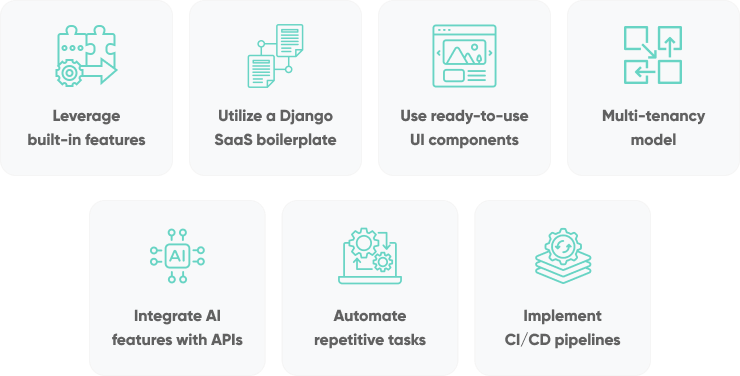
To further enhance the efficiency of Django SaaS development, consider these proven shortcuts. Each of these strategies leverages Django's strengths to streamline your complete product development process, allowing you to deliver high-quality SaaS products faster and more efficiently.
Leverage Django’s built-in features
Leveraging Django's built-in features is a highly effective strategy to accelerate SaaS development. Django’s "batteries-included" philosophy provides a comprehensive set of tools and components that streamline many aspects of a Django project:
- Django ORM: Easily interact with databases, manage data models, and perform data processing tasks with minimal custom source code created.
- Django admin: Quickly create a user-friendly interface for managing data, enabling rapid testing and iteration.
- Authentication system: Securely manage user accounts and permissions.
- Form handling: Simplify form creation and validation for data input.
- URL routing: Efficiently manage and map URLs to views and controllers.
- Static file management: Handle and serve static files such as images, CSS, and JavaScript effortlessly.
Get a head start with a Django SaaS boilerplate
Using a SaaS boilerplate is a great way to speed up the development process. A SaaS boilerplate acts as a web app template that has been specifically designed for use with SaaS applications. SaaS boilerplates typically include everything that is needed to launch a complete SaaS platform, including all the necessary pages, graphics, and functionality.
Some examples of SaaS boilerplates are SaaS Pegasus and AI SaaS Template.
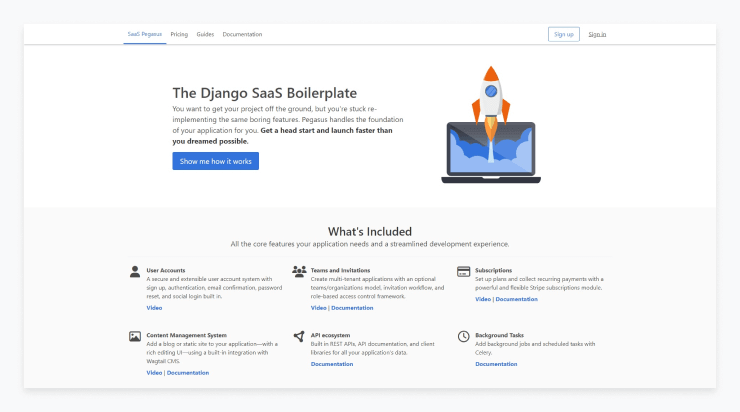
PRO TIP: Be thoughtful about which elements to retain, adjust, or remove, always keeping in mind the needs of your users and your unique value proposition. Avoid over-customization, as it could negate the benefits of time and effort savings that a boilerplate provides. This step by step tutorial approach will ensure you maximize efficiency in your new project.
Read More: 9 Proven Shortcuts for Faster SaaS Application Development
Use ready-to-use UI components
Ready-to-use UI components significantly reduce development time by allowing developers to focus on building core features rather than designing and coding UI elements from scratch. These pre-built components streamline the development process, enabling teams to concentrate on key differentiators and the unique features of their SaaS product.
By integrating high-quality, well-tested UI elements, you ensure a consistent look and feel across your application, enhancing the user experience. These components also reduce the likelihood of bugs, improving the overall stability and reliability of your software. Leveraging ready-made UI elements not only speeds up development but also ensures that your product meets high standards of quality and usability from the outset.
Choose an optimal multi-tenancy model
Choosing an optimal multi-tenancy model can significantly speed up Django SaaS development by providing a scalable and efficient way to manage multiple customers on a single application instance.
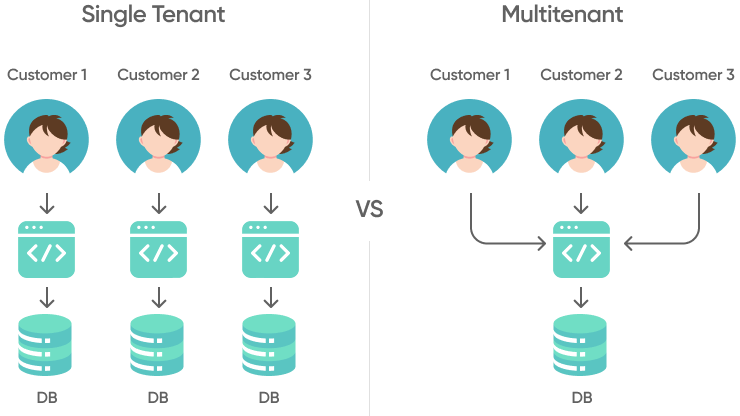
Here’s a few suggestions:
- Choose single application, single database if you require the simplest setup and don't need strong tenant isolation.
- Choose single application, multiple databases if you anticipate frequent schema changes and want to minimize the impact on other tenants.
- Choose multiple applications, multiple databases if your application demands the highest level of data security and performance at scale.
Integrate AI features with APIs
Using APIs from established AI service providers allows developers to quickly add sophisticated capabilities such as natural language processing, image recognition, speech recognition, and predictive analytics without the need for extensive machine learning algorithm expertise or infrastructure.
Here are some top APIs to consider for integrating AI features into your Django SaaS application:
- Google Cloud Natural Language API: Analyze and understand text with sentiment analysis, entity recognition, and syntax analysis.
- Amazon Rekognition: Detect objects, scenes, and activities in images and videos, and provides facial analysis and recognition.
- Google Cloud Speech-to-Text API: Converts audio to text, supporting over 120 languages and dialects.
- Amazon SageMaker: Build, train, and deploy machine learning models at scale.
- Dialogflow by Google: Build conversational interfaces, such as chatbots, for various platforms.
- Microsoft Azure Cognitive Services: Offers a wide range of AI capabilities, including vision, speech, language, and decision-making APIs.
Automate repetitive development tasks
Automating repetitive development tasks is a highly effective strategy to speed up SaaS development with Django. By reducing the manual effort required for common tasks, developers can focus more on building unique features and improving the core functionality of their applications. Here are some key ways to automate tasks in Django development:
- Custom management commands: Creating custom management commands allows you to automate routine administrative tasks directly from the command line. These commands can be used for database maintenance, data imports, or sending notifications that notify users or warn users about important updates.
- Code generators: Utilize code generators to quickly scaffold out common code structures. Tools like Django's startapp command and third-party generators can create boilerplate code for models, views, and serializers, significantly reducing the time spent on initial setup.
- Code formatting: Implement automated code formatting tools such as Black or Prettier. These tools ensure that your codebase adheres to consistent styling guidelines, improving readability and reducing the time spent on code reviews and style corrections.
- Dependency management: Automate dependency management with tools like pip-tools or Poetry. These tools help maintain a clear and consistent set of dependencies across development environments, reducing the likelihood of dependency conflicts and making it easier to manage updates.
Implement CI/CD pipelines
CI/CD pipelines automate the process of testing, building, and deploying code, ensuring that every change in your Python Django project is validated and integrated smoothly. This process can include background tasks that manage the deployment process efficiently, consider using a modern CI/CD tool like GitHub Actions or CircleCI. These tools offer a user-friendly experience and often integrate seamlessly with Git repositories.
CI/CD pipelines also enhance the reliability and consistency of deployments. Automated tests run with every code change, catching bugs early and ensuring that only high-quality code makes it to production. This not only improves the stability of the application but also provides a continuous feedback loop to developers, helping them address issues promptly.
SaaS Development with SoftKraft
If you're looking for SaaS development services, our Python Development Company will partner with you to build a comprehensive strategy to meet your business needs and deliver a user-ready, scalable SaaS software solution.

Conclusion
Implementing these 7 proven shortcuts in your Django SaaS development can significantly reduce time to market, ensuring you stay competitive in the fast-paced SaaS industry. By leveraging Django's powerful features you can create a robust, scalable, and efficient SaaS product.

